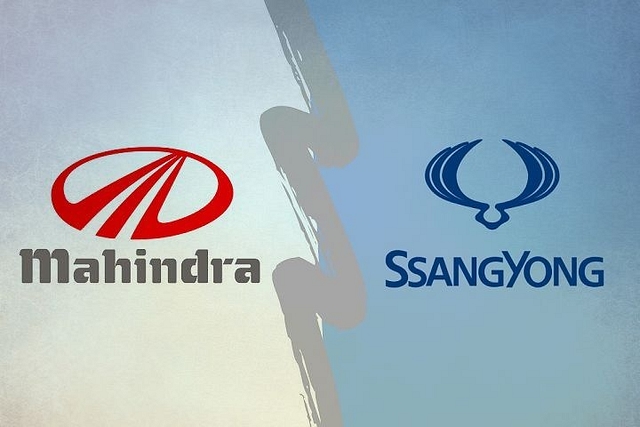
South Korean Xenophobia As Much To Blame As M&M’s Strategic Mistakes With SsangYong
Korean xenophobia, more than any strategic failure on the part of the Mahindras, has to be called out for what it is.
After struggling with it for more than a decade and losing millions of dollars in the process, the Mahindra & Mahindra Group (M&M) finally gave up on SsangYong Motor of South Korea by filing for bankruptcy at a Seoul court. This is the second time the company is filing for bankruptcy, its first being in 2009 when M&M bought it for $463 million from a scrapheap.
Many reasons are being adduced for M&M’s failure to turn around this South Korean maker of higher-end sports utility vehicles (SUVs), which should have strengthened it in its core business, which include the successful Bolero and Scorpio brands. These reasons include the current Covid disruption which has impacted all auto companies, a financially over-extended M&M group that diversified into two- and three-wheelers where it had no particular brand salience, and stronger competition in the Indian SUV market, but none of these mention the elephant in the room: Korean xenophobia.
All cultures are xenophobic to some extent, but none are more xenophobic than the East Asian cultures of China, Japan and Korea, among others. This is why these countries have produced world beating brands and companies, but the reverse has almost never been true: it is rare for any western giant, howsoever blessed it may be with endless amounts of cash (consider Google, Amazon, Uber, Walmart), succeed in these ultra-xenophobic cultures.
South Asian culture, or more precisely the Indic part of South Asian culture, is more open to diversity and cultural dissonance, and so are many north American and western European countries. This means while East Asian companies can succeed in India and the West, it is highly unlikely that Indian companies can succeed in China, Japan or South Korea. There is simply too much local hostility to the outsider.
The Tatas succeeded with British JLR and Tetley, and may have done the same with Corus Steel if 2008 had not intervened, but M&M failed with SsangYong because its takeover target was unwilling to play ball.
In over a decade of pumping cash into SsangYong, M&M has produced all of one success in the Indian market, the Tivoli SUV, while Rexton is a failure. While the Mahindras won’t admit it openly, one reason for this is the failure of the Korean management of SsangYong to work as a partner to M&M, where it focused on developing brands for the booming Indian market for SUVs. Being culturally sensitive to this underlying hostility, the Mahindras let SsangYong’s managers do their own thing for most of the time, thus preventing the very synergies that could have made the partnership work. Korean xenophobia, more than any strategic failure on the part of the Mahindras, has to be called out for what it is.
In contrast, consider how easily South Korean brands like Samsung, Hyundai, LG and Kia have succeeded in India with Indian managers in most critical positions. The same goes for Chinese brands such as Xiaomi, Vivo, Lenovo, Oppo, MG Rover and Haier.
Contrast also how most Japanese companies have been unable to work with their Indian partners. In autos, Venu Srinivasan of TVS Motor was the first to bid goodbye to Suzuki, followed by the Escorts group with Yamaha, the Munjals with Honda and the Bajajs with Kawasaki. India’s largest carmaker, Suzuki Motor, can work with Japan’s Toyota in India, but not with its Indian partner, which was the Indian government in the 1980s. In 2011, Suzuki broke up with German Volkswagen, with whom it had a deal to develop diesel engines for the Indian and other markets.
If you want to know why Western companies, with more open cultures, fail in xenophobic cultures like those of China, Korea and Japan, you can read about the mounting list of failures here, here, here, here and here. Even though they have been liberalising rules on immigration, especially Japan due to its shrinking population, these societies remain hostile to foreigners and other cultures, including immigrants.
When it comes to South Korea, there is often active hostility to foreign investors, even though Koreans do want foreign investment. In an interview to Korea Times, Foreign Investment Ombudsman Kim Sung-jin red-flagged this hostility strongly. He admits that South Koreans “don't have warm views on foreign businesses…I still see many xenophobic ideas in Koreans….Whether it is because of Korea's homogeneity or its experiences of seeing some foreign firms fleeing after raking in huge profits, society has an unfriendly attitude toward foreign companies, especially those making a lot of money here.”
The report has this to add: “Such a hostile attitude is not only mentioned by Kim but also American Chamber of Commerce in Korea Chairman James Kim, who said in November (2018) that (even) Korea's Fair Trade Commission (FTC) tends to treat investing firms as ‘criminals’.”
M&M, which never made any money in South Korea, should have been seen as a sugar daddy to be wined and dined by the management of SsangYong, but their failure to align with their benefactor’s global and Indian interests shows that Korean xenophobia is far from cured. Other Indian investors in South Korea should take note.